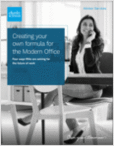Key findings of the new study include these:
- Institutional investors are more focused on achieving absolute return targets than on outperforming a market benchmark. Risk budgets, matching liabilities and avoiding downside risk all play an important role in this shift.
- Survey respondents have expanded their use of alternative investments to improve diversification and potentially help with downside risk, and plan to increase their allocations to alternatives over the next five years.
- The 2008 financial crises caught many institutional investors off guard, their risk management procedures widely perceived to be insufficient for a crisis of such magnitude.
- Investors most commonly use analytical tools based on risk-return analysis and performance attribution to model, analyze and monitor both traditional and alternative investments, as well as liabilities.
- Since 2008, institutional investors have moved toward solutions that offer more investment transparency out of a desire to avoid unintended leverage and to better understand underlying investments.
Sixty-three percent of respondents to the 2013 survey said increased management awareness of the growing field of risk management caused their firm to institute risk management practices.
Fifty-nine percent felt their firms had benefited through the evolution of risk management over the last five years, though many were undecided about the effect, with results varying markedly by region.
“The crisis of 2008 was different,” Markowitz said. “So was the crisis that started in March of 2000 with the bursting of the tech bubble. So will be the next crisis.”
This means the portfolio selection process can never be put on autopilot, he said.
“The trusted quant team needs to constantly evaluate the current situation. It should also make sure that higher management understands what assumptions are being made, how and by whom any exotic asset classes being used have been evaluated, and what the vulnerabilities are of the general approach that is being taken.”
The push to integrate risk control at the enterprise level, rather than at the individual portfolio level, should continue, he said.








 February 19, 2014 at 11:39 AM
February 19, 2014 at 11:39 AM










